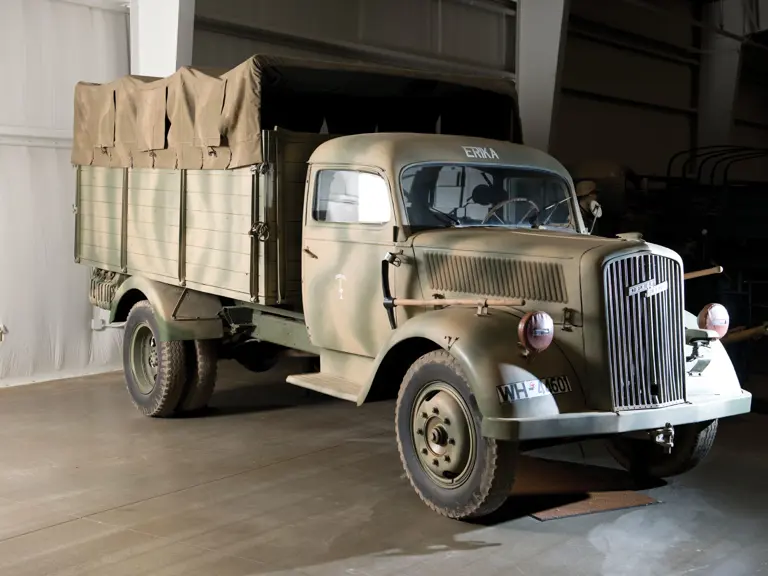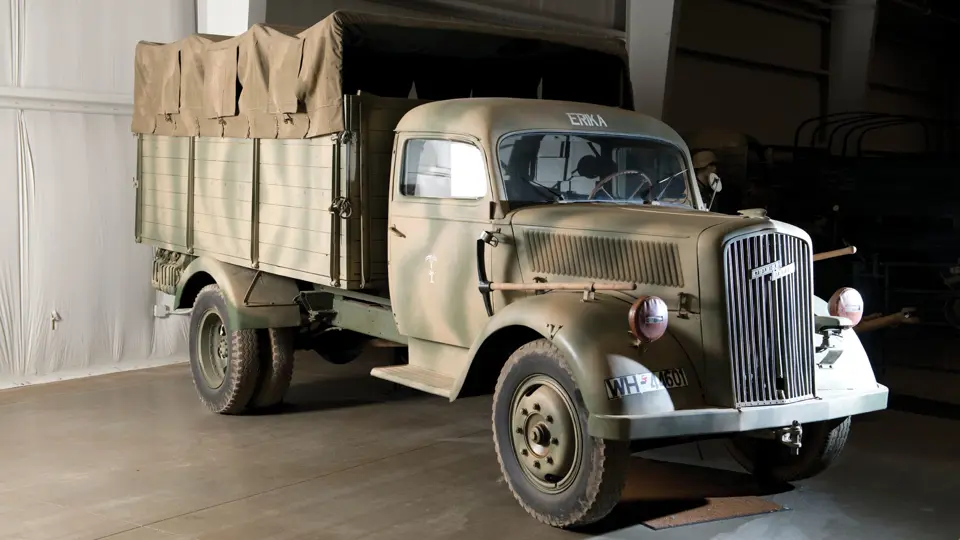Please Note: Information regarding these museum display vehicles was provided by the National Military History Center and has not been independently verified by Auctions America by RM ("AA"). As such, AA does not verify, warrant or guarantee any of this information. Prior inspection and research by the buyer is highly encouraged and recommended.
ATTENTION: Buyers are responsible for securing transportation and moving/loading of lots. Lot may be left on display indefinitely in the museum free of charge with a signed loan agreement form. Lots are sold as is, where is.
Please note this is being sold on "Bill of Sale" only.
Manufacturer: Opel Division of General Motors, Germany
Production Year: 1943
Engine: Opel, 3.6-liter, 68-hp, six-cylinder, liquid-cooled, gasoline
Transmission: 5F1R
Brakes: Hydraulic
Length: 20-feet, 4-1/2-inches
Width: 7-feet, 5-1/2-inches
Height: 9-feet, 6-inches (to top of cargo area bonnet)
Weight: Approximately 3.4-tons
Armor: None
Armament: NONE on this example - Could be fitted with a 7.92-mm MG34 or MG42 machine gun
Maximum speed: Approximately 50-mph
Maximum Payload: 3-tons
Markings: German 12th Infantry Division, Bakery Company
Production of the Opel Blitz (Lightning) 3,6-36S began in 1938 at the Opel Brandenburg / Havel plant under the direction of Heinz Nordhoff whom, after WW II, became head of Volkswagen. The 4x2 Opel Blitz 3-ton is one of the first standardized military truck models that was developed from guidelines established by the Schell-Program. In 1938, General Schell, Director of Motorization for the Wehrmacht (German military), proposed to cut back procurement of vehicles of all types to just a few standard chassis which, in turn, were suitable for both military and commercial service. He reduced the number of truck models from 113 to 30. The Schell-Program introduced universal weight capacity classes of 1,1-1/2, 3, 4-1/2 and 6-1/2-tons, most with a basic 4x2 (S-Type) and a 4x4 (A-Type) version. The Opel Blitz 3-ton 4x2 (S-Type) was the Wehrmacht’s most popular, and successful 4x2 truck design. Field reports from front-line troops in North Africa and Russia using the Opel 3-ton 4x2 were very positive. Early models featured civilian-type cabs; late models had simplified ersatz cabs constructed of timber frames and pressed cardboard. About 70,000 Opel 3-ton 4x2s, in several versions, were built.



 | Auburn, Indiana
| Auburn, Indiana


